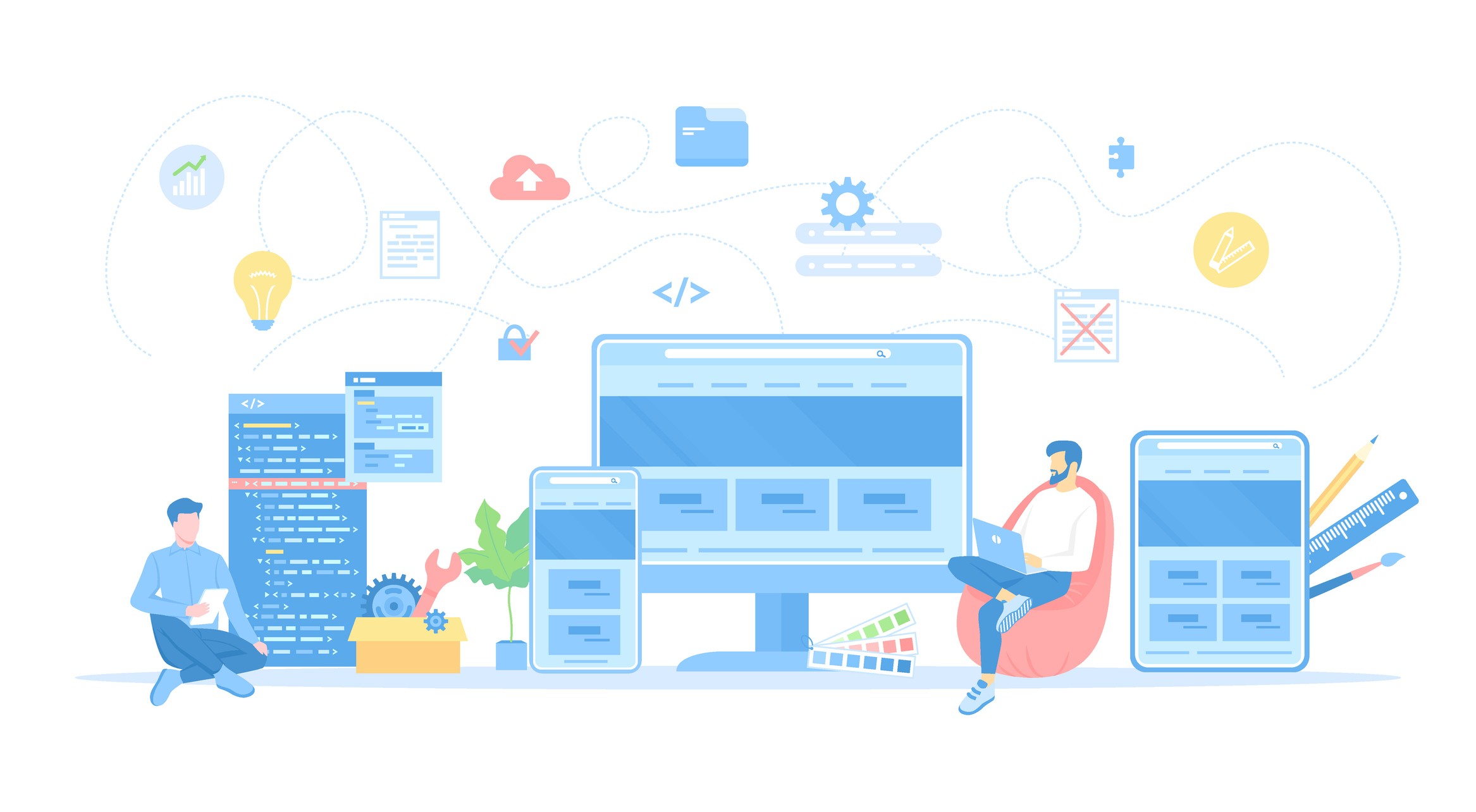Driving traffic to your website is only half the battle. The real challenge lies in transforming that traffic into tangible sales or actionable leads. Every click on your site represents potential revenue, but how can you ensure that potential is realized? How can you effectively convert website visitors into committed customers?
An effective conversion strategy goes beyond mere visitor attraction. It delves deep into the nuances of user behaviour, web design, content relevance, and more. The importance of such strategies cannot be understated. Not only do they help increase revenue, but they also enhance user trust, brand loyalty, and overall engagement.
The Website Visitor
Just as a physical store caters to the needs of diverse customers, an online platform must recognize and respond to a variety of visitor types.
Different Types of Visitors
- The Browser
This visitor stumbles upon your site while surfing the web. They might not have a clear intent to purchase but are open to discovery. - The Researcher
Armed with a mission, this visitor is in the information-gathering phase. They're comparing products, reading reviews, and weighing their options. - The Ready-to-Buy Customer
They've done their homework and have landed on your site to make a purchase. The key is to make this process as smooth as possible for them. - The Skeptic
Even if your product or service is exactly what they're looking for, they need more convincing. Testimonials, reviews, and clear return policies can be influential for this visitor.
Psychology Behind Online Browsing and Purchasing
Understanding the psychology of your visitors can give you an edge in crafting a website that resonates with their needs and desires.
- Trust
Before making a purchase, a visitor needs to trust your website. Trust signals like SSL certificates, transparent return policies, and genuine user reviews can make a significant difference. - Immediate Gratification
Online, patience is limited. Websites that offer quick load times, instant chat support, or next-day shipping can cater to this need for immediacy. - Cognitive Ease
A clutter-free design, easy navigation, and clear calls to action reduce the cognitive load on a visitor, making them more likely to convert. - Emotional Connection
Storytelling, relatable content, and authentic visuals can foster an emotional connection, nudging the visitor towards making a purchase. - Fear of Missing Out (FOMO)
Limited time offers, flash sales, or showcasing limited stock can create a sense of urgency and boost conversions.
By aligning your website's design and content with the mindset of your visitors, you can create an online environment that not only attracts but also persuades them to take action.
Crafting Compelling Website Content
For websites, content remains king. However, not just any content will do. To truly captivate your website's visitors and guide them down the conversion funnel, your content must resonate, inform, and inspire.
The Power of Engaging and Relevant Content
A successful website hinges on content that is both engaging and pertinent. When users stumble upon material that resonates with their queries, interests, or necessities, they're inclined to delve deeper, navigate more pages, and ultimately, become loyal patrons. To achieve this:
- Prioritize Relevance
Tailor your content to mirror the specific needs, queries, and interests of your intended audience. This entails a deep understanding of what challenges they face, what they desire, and providing content solutions accordingly. - Champion Quality
It's more beneficial to have fewer, high-caliber content pieces that offer genuine insights than to bombard your audience with a multitude of mediocre ones. - Diversify Your Offerings
Adopt a multi-faceted content approach. Blend in various formats like blogs, videos, infographics, and podcasts. This caters to diverse user preferences and ensures a wider appeal.
Using Storytelling as a Tool
Humans are hardwired for stories. Storytelling transcends mere information sharing by forming an emotional connection, making your brand memorable and relatable.
- Personal Stories
Share the origin story of your business, success stories of clients, or behind-the-scenes looks into your company culture. These narratives help humanize your brand and make it more approachable. - Case Studies
Real-life examples of how your product or service solved a problem can be powerful testimonials. They showcase your solutions in action and build trust with prospective customers. - Interactive Narratives
Use interactive content like quizzes, surveys, or choose-your-own-adventure style narratives to engage visitors actively. Such content not only tells a story but also involves the visitor in it.
By marrying compelling content with the art of storytelling, businesses can forge a deeper bond with their website visitors, making the conversion journey feel less like a sales pitch and more like a mutual journey of discovery.
Effective Call-to-Action (CTA) Placement
The Call-to-Action (CTA) is a pivotal element in guiding website visitors toward desired actions, be it signing up for a newsletter, making a purchase, or booking a consultation. Effectively designed and strategically placed CTAs can make the difference between a casual browser and a converted customer.
Best Practices for CTA Design and Placement
- Clarity and Simplicity
Your CTA should be clear about what will happen when clicked. Whether it's "Download Now," "Get Started," or "Learn More," the language should be straightforward and action-oriented. - Visibility
Place your CTAs in prominent areas where visitors naturally direct their attention. This often includes above the fold (the area visible without scrolling) but can also be strategically sprinkled throughout content, especially after key points or compelling sections. - Contrast and Design
The CTA button should stand out from the rest of the page using contrasting colours, unique shapes, or dynamic designs. However, it shouldn't clash with the overall website aesthetic. - Use Directional Cues
Subtle cues like arrows or imagery that "points" towards the CTA can guide the visitor's eyes and attention to the action button. - Limit Choices
Too many CTAs can overwhelm visitors. Prioritize the most crucial actions and avoid presenting too many choices that can lead to decision paralysis.
A/B Testing for CTAs
A/B testing, also known as split testing, is a method of comparing two versions of a webpage or app against each other to determine which one performs better. When it comes to CTAs:
- Test Different Wording
Sometimes a slight change in wording can have a significant impact. For instance, "Get My Free E-book" might perform better than "Download Now." - Colour Variations
While certain colours are often associated with specific emotions or actions, the best way to know which works for your audience is to test it. - Position on Page
Experiment with placing your CTAs in different locations to determine which spot garners the most attention and clicks. - Button Size and Shape
Test variations in size, rounded corners versus squared, or even incorporating shadows for a 3D effect. - Analyze and Adapt
After running A/B tests, analyze the results, implement the winning variations, and consistently refine your CTAs for optimal performance.
By employing these strategies and continuously optimizing, businesses can ensure their CTAs not only capture attention but effectively encourage desired actions, maximizing the conversion potential of every website visitor.
Leveraging Testimonials and Reviews
Testimonials and reviews act as powerful tools that can sway decision-making processes. They provide reassurance to potential customers by showcasing the experiences of those who have previously engaged with a product or service.
Essentially, they are an embodiment of the concept of "social proof," which posits that people are more likely to undertake an action if they see others doing the same.
The Influence of Social Proof
Social proof is based on the psychological phenomenon where individuals, when unsure, look to others' actions and viewpoints to inform their decisions. This concept gains significant importance online where prospects can't physically examine products. In such scenarios, reviews and testimonials serve as pillars of trust, validating the authenticity and value of your offerings.
Having authentic testimonials and reviews plays a crucial role in enhancing a brand or product's credibility. These genuine reflections from actual users often resonate more with potential customers than any crafted marketing pitch. Furthermore, testimonials shine a light on previous users' experiences, addressing potential concerns or highlighting benefits, which can help dispel any doubts or reservations future customers may harbor.
How to Effectively Showcase Testimonials
- Strategic Placement
Position testimonials where they will have the most impact, such as near CTAs, on product pages, or in the checkout area. - Incorporate Different Media
While written testimonials are valuable, consider incorporating video testimonials or interview snippets for a more personal touch. Visual representations, like before-and-after photos, can also be compelling. - Highlight Specific Benefits
Instead of generic praises, focus on testimonials that delve into specific benefits or features of your product or service. - Keep it Authentic
Resist the temptation to edit or alter testimonials. Authenticity is key. However, you can highlight or bold specific sections for emphasis. - Use Trust Badges
If your reviews are collected through trusted platforms like TrustPilot, Google Reviews, or Yelp, consider using their badges or widgets on your site to add an extra layer of credibility. - Encourage More Reviews
Implement strategies to get more reviews by encouraging satisfied customers to share their experiences. Consider offering incentives or simple thank-you notes to show appreciation for their time.
Incorporating genuine testimonials and reviews in a strategic manner can significantly boost your website's persuasive power. When potential customers see the positive experiences of others, they're more likely to feel confident in making a purchase or engaging with your service.
Personalization and User Experience (UX)
Offering a one-size-fits-all website experience no longer cuts it. The modern user not only appreciates but also expects a certain level of personalization when they visit websites. Alongside this, ensuring a seamless user experience, especially on mobile devices, is critical in nudging visitors down the conversion funnel.
Tailoring Content Based on User Behaviour
- Dynamic Content Delivery
By utilizing tools and technologies that track user behaviour and preferences, websites can dynamically alter content to fit the individual visitor. For example, a returning visitor might be shown different homepage content compared to a first-time visitor. - Recommendation Engines
E-commerce sites, in particular, can benefit from recommendation engines which suggest products based on a user's browsing history, increasing the likelihood of a purchase. - Segmented and Targeted Offers
By categorizing your audience into different segments based on their behaviour, demographics, or source of traffic, you can provide targeted offers or content that resonates more specifically with each group. - Behavioural Triggers
Deploying automated tools that present specific content or offers based on a user's actions. For instance, exit-intent pop-ups that appear when a user is about to leave the site can offer special deals or reminders that encourage them to stay.
Importance of Mobile Optimization
The significance of mobile optimization cannot be stressed enough. A surging number of consumers prefer browsing websites on their mobile devices. Ensuring that a website is mobile-friendly isn't merely advantageous but essential. A website that fails to load seamlessly on mobile or presents navigational challenges is at risk of losing potential customers.
Sites optimized for mobile cater to the intricacies of smaller screens and varied user patterns. This encompasses faster loading speeds, conveniently clickable elements, and content that's digestible in a mobile setting. Furthermore, major search engines, such as Google, have shown a preference for mobile-optimized sites in their rankings, especially when the search is conducted on a mobile device.
Mobile users exhibit distinct interactive behaviours; whether it's watching a short video, responding to a call-to-action, or perusing a series of images. Addressing these unique tendencies by refining for mobile results in heightened engagement.
Additionally, the digital journey of users frequently involves device-hopping. They may commence on mobile and transition to a desktop for final actions like making a purchase. Providing a consistent, tailored experience across these platforms is vital to retain their interest and guide them to conversion. An amalgamation of mobile-centric strategies, coupled with personalized content driven by user behaviour, can immensely enhance the overall user experience, ultimately translating to successful conversions.
Engage with Live Chats and Bots
Live chats and bots have emerged as pivotal tools in engaging website visitors and guiding them towards conversion. These tools not only facilitate real-time communication but also address user concerns, answer queries, and offer solutions promptly, enhancing the user experience.
Real-time Problem-solving and Inquiries
The immediacy of addressing concerns can be pivotal for businesses.
Live chats stand out by offering visitors instantaneous responses, marking the difference between retaining a potential customer or losing them. Beyond just rapid replies, live chats also infuse a personalized element into the conversation. Unlike automated bots that cater to generic queries, live chats allow for a deeper understanding of a visitor's unique requirements, forging a trustful and meaningful connection.
Such real-time engagements with visitors are invaluable for gathering immediate feedback. By interacting via chats, businesses can glean insights about user experiences, anticipations, or any encountered challenges, equipping them to refine and enhance their offerings promptly
Tips for Efficient Chatbot Integrations
- Set Clear Objectives
Before integrating a chatbot, define what you want it to achieve. Whether it's handling basic inquiries, guiding users through a sales funnel, or offering technical support, a clear objective ensures efficiency. - Human-like Interactions
Design your chatbot to interact in a friendly and human-like manner. This can make the communication more relatable and less mechanical for the user. - Seamless Handoff
If a query is beyond the chatbot's capability, ensure a seamless transition to a human representative. This avoids user frustration and ensures complex issues are addressed adequately. - Regular Updates
Continually update your chatbot based on user interactions and feedback. This will improve its efficiency and accuracy over time. - Transparency
Make it clear to users when they're interacting with a bot. This sets the right expectations and avoids any potential confusion. - Multichannel Capability
Ensure your chatbot can operate across various platforms where your audience might engage with your brand, be it on your website, social media, or messaging apps.
By embracing live chats and chatbots, businesses can offer real-time solutions, improve user engagement, and ultimately drive conversions. It's essential, however, to strike a balance between automation and human touch, ensuring visitors always feel valued and understood.
Retargeting Strategies
Capturing the attention of users is just the first step. It's common for potential customers to visit a website, browse products or services, but then leave without taking any action. This is where retargeting strategies come into play, ensuring that your brand remains top-of-mind and encouraging those visitors to return and complete their purchase or desired action.
Understanding Retargeting and its Benefits
Retargeting, often referred to as remarketing, is a digital advertising strategy that targets users who have previously visited your website but did not convert. Through the use of cookies, these users are shown tailored ads across different platforms, reminding them of the products or services they viewed and nudging them back to your site.
Benefits:
- By targeting users who have already shown an interest in your offerings, retargeting campaigns tend to have higher conversion rates than traditional advertising campaigns.
- Retargeting ensures your brand remains in the consciousness of potential customers, reinforcing brand recognition and loyalty.
- Due to its focused approach, retargeting often yields a higher return on investment compared to other advertising strategies.
- With dynamic retargeting, ads can showcase the exact products or services users viewed, creating a tailored advertising experience.
Tips for Effective Retargeting Campaigns
- Segmentation
Divide your audience into specific segments based on their behaviour on your website. For instance, target users who added items to their cart but did not check out differently from those who merely browsed a product category. - Frequency Caps
Ensure you're not overwhelming users with ads. Set a limit on how often your ad appears to the same user within a specific timeframe. - Engaging Ad Design
Your retargeted ads should be visually appealing and resonate with the audience. Keep them relevant to what the user previously viewed but also showcase other offerings. - Clear Call-to-Action
Your ads should have a compelling CTA, guiding the user on the next steps, whether it's completing a purchase, signing up for a newsletter, or any other desired action. - Cross-Platform Retargeting: Extend your retargeting efforts across various platforms, including social media, search engines, and partner websites.
- Monitor and Adjust
Regularly track the performance of your retargeting campaigns. Adjust strategies based on which ads are most effective and which audience segments are converting.
Understanding the power of retargeting and implementing best practices, businesses can tap into a pool of users who are already familiar with their brand, driving conversions and fostering long-term relationships.
Building Trust Through Transparency
Building and maintaining trust is more crucial than ever. As website visitors navigate through your online space, every interaction, piece of information, and policy presented can influence their perception of your brand. Emphasizing transparency, businesses not only cater to the needs and concerns of their potential customers but also foster a foundation of trust that can lead to lasting relationships and increased conversions.
Importance of Clear Return and Privacy Policies
- Clear Return Policy
A straightforward and easily accessible return policy can alleviate potential reservations customers might have before making a purchase. Knowing that they have the option to return or exchange products, should they need to, can boost their confidence in committing to a purchase. It's essential to outline:- Timeframes for returns or exchanges.
- Conditions under which returns are accepted.
- The process for initiating a return.
- Transparent Privacy Policies
A clear privacy policy should detail:- What information is collected from visitors.
- How this information is used.
- Any third parties with whom the data is shared.
- Options available to users regarding the collection, use, and distribution of their data.
Showcasing Security Certifications
Online security concerns remain a significant barrier to conversion for many users. By prominently displaying security certifications and badges, businesses can instantly communicate to visitors that their data is safe.
- SSL Certificates
An SSL certificate not only encrypts user data but also signifies to visitors that the site is secure. A padlock or 'https' in the URL can be a simple yet effective trust signal. - Third-Party Security Badges
Badges from recognized security providers such as Norton, McAfee, or TrustE can reassure visitors about the site's legitimacy and safety. - Payment Security
If you have an e-commerce component, showcasing badges from payment gateways like PayPal, Stripe, or Visa can instill confidence in users about the security of their payment details. - Transparent Practices
Beyond just displaying badges, being open about your site's security practices, regular audits, and measures taken to protect user data can further enhance trust.
Transparency is not just a buzzword; it's a crucial element in building trust online. By being open about policies, practices, and security measures, businesses can create an environment where visitors feel safe, valued, and more inclined to convert into loyal customers.
The Continuous Journey of Optimization
Optimizing website conversions is not static. The web is in a state of perpetual evolution, driven by technological advancements, shifting user behaviours, and emerging market trends. Successfully converting website visitors into customers is not a one-time task, but an ongoing journey. It demands constant observation, adaptation, and fine-tuning.
At the heart of this journey is the user. As the technology morphs, so do the behaviours, expectations, and needs of online users. What resonates with them today might not have the same impact tomorrow. Hence, the significance of ongoing optimization cannot be overstated. Regularly revisiting and refining website strategies ensures that businesses remain aligned with the ever-evolving preferences of their audience.
Staying updated with consumer behaviour trends is paramount. This not only provides insights into what potential customers are seeking but also highlights emerging patterns that can be leveraged for future strategies. By understanding these trends, businesses can anticipate user needs, thereby positioning themselves at the forefront of delivering exceptional online experiences.
The key to consistently converting website visitors lies in commitment—a commitment to understanding the audience, to evolving with the times, and to relentless optimization. With this dedication, businesses can not only capture the attention of visitors but also foster loyalty, ensuring that they return time and again.




